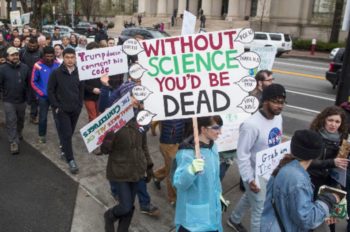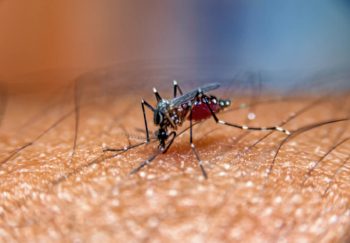
I’ve actually never been able to find a precise statement of the proposition on which the 97% supposedly agree. But suppose you can find the statement.
And suppose that it consists of some kind of definitive assertion that there has been significant atmospheric warming over the past century, and that most to all of such warming has been caused by human greenhouse gas emissions.
Is this real science or fake science? How do you tell?
It seems that the most common approach of most people to this question is to trust the “scientists.” After all, science is complicated. You are not a scientist, so how are you ever going to understand this?
And even if you are a scientist in some other field, and you have both the talent and the interest to delve into the details of how this conclusion was reached, you don’t have the time.
You are told that 97% of “climate scientists” agree. Really, what choice do you have other than to trust the people who have done the work, and who call themselves the scientists and the experts on this subject?
This approach apparently seems reasonable to a lot of people, including many, many seemingly intelligent people.
But not to me. The approach does not seem reasonable to me because the scientific method provides a very simple check for testing whether scientific claims are valid, and you don’t need to be a scientist to apply this check.
(Another way of looking at it is that the people who apply this check are actually the real scientists, because they are the ones using the scientific method; and the people who call themselves “scientists” and work in “scientific” fields of endeavor and publish in scientific journals and wear scientist outfits, but don’t apply the actual scientific method, are not really scientists. But at this point in time the label “scientist” has been so captured by those who apply it to themselves whether or not they follow the scientific method that I think it is hopeless to get it back.)
Here is the very simple check. When confronted with a claim that a scientific proposition has been definitively proven, ask the question: What was the null hypothesis, and on what basis has it been rejected?
Consider first a simple example, the question of whether aspirin cures headaches. Make that our scientific proposition: aspirin cures headaches.
How would this proposition be established? You yourself have taken aspirin many times, and your headache always went away. Doesn’t that prove that the aspirin worked? Absolutely not.
The fact that you took aspirin 100 times and the headache went away 100 times proves nothing. Why? Because there is a null hypothesis that must first be rejected. Here the null hypothesis is that headaches will go away just as quickly on their own.
How do you reject that? The standard method is to take some substantial number of people with headaches, say 2,000, and give half of them the aspirin and the other half a placebo.
Two hours later, of 1,000 who took the aspirin, 950 feel better and only 50 still have the headache; and of 1000 who took the placebo, 500 still have the headache. Now you have very, very good proof that aspirin cured the headaches.
The point to focus on is that the most important evidence — the only evidence that really proves causation — is the evidence that requires rejection of the null hypothesis.
SEE ALSO: The Fake Science Of Global Warming
Over to climate science. Here you are subject to a constant barrage of information designed to convince you of the definitive relationship between human carbon emissions and global warming.
The world temperature graph is shooting up in hockey stick formation! Arctic sea ice is disappearing! The rate of sea-level rise is accelerating! Hurricanes are intensifying! June was the warmest month EVER! And on and on and on.
All of this is alleged to be “consistent” with the hypothesis of human-caused global warming.
But, what is the null hypothesis, and on what basis has it been rejected? Here the null hypothesis is that some other factor, or combination of factors, rather than human carbon emissions, was the dominant cause of the observed warming.
Once you pose the null hypothesis, you immediately realize that all of the scary climate information with which you are constantly barraged does not even meaningfully address the relevant question.
All of that information is just the analog of your 100 headaches that went away after you took aspirin. How do you know that those headaches wouldn’t have gone away without the aspirin?
You don’t know unless someone presents data that are sufficient to reject the null hypothesis. Proof of causation can only come from disproof of the null hypothesis or hypotheses, that is, disproof of other proposed alternative causes.
This precept is fundamental to the scientific method, and therefore fully applies to “climate science” to the extent that that field wishes to be real science versus fake science.
Now, start applying this simple check to every piece you read about climate science. Start looking for the null hypothesis and how it was supposedly rejected.
In mainstream climate literature — and I’m including here both the highbrow media like the New York Times and also the so-called “peer-reviewed” scientific journals like Nature and Science — you won’t find that.
It seems that people calling themselves “climate scientists” today have convinced themselves that their field is such “settled science” that they no longer need to bother with tacky questions like worrying about the null hypothesis.
The centrality of focusing on the null hypothesis is the reason that studies like those covered in my last post (“Things Keep Getting Worse For The Fake ‘Science’ Of Human-Caused Global Warming,” July 12) are so important.
Is there some other factor that could plausibly be causing global warming that more closely correlates with observed temperatures? How about clouds? Or ocean circulations (El Niño/La Niña)? Or volcanic activity?
When climate scientists start addressing the alternative hypotheses seriously, then it will be real science. In the meantime, it’s fake science.
A final word about my favorite subject, the ongoing systematic alteration of the world’s surface temperature (ground thermometer-based) records.
Readers here are undoubtedly familiar with my now 23-part series, The Greatest Scientific Fraud Of All Time. The alteration of the surface temperature records only relates to making the surface temperature record correlate more closely with the increase in atmospheric CO2.
As noted in the Wallace, et al., May 2018 paper, without the alterations, the correlation between atmospheric CO2 and the surface temperature record is low.
In other words, without faking the data, they can’t even show consistency between atmospheric CO2 and temperature increase. And that’s before even getting to dealing with the problem of the null hypotheses.
Read more at Manhattan Contrarian



















Please see the following:
https://juniperpublishers.com/ijesnr/pdf/IJESNR.MS.ID.556039.pdf
Thank you for this. I applaud your attention to good scientific practice.
So we have two hypotheses here about global warming science.
Hypothesis (1): Mainstream climate scientists have ignored or rejected alternative explanations for warming without good reason. (Therefore they’re doing fake science.)
Hypothesis (2) (Null hypothesis): Mainstream climate scientists have considered and rejected alternative explanations with good reason.
So, following your recommendation for good scientific practice, let’s meaningfully consider the null hypothesis.
A few minutes of internet searching comes up with this mainstream discussion of the null hypothesis https://skepticalscience.com/how-we-know-recent-warming-is-not-natural.html, with links to further discussions and sources. I’m just excerpting a few paragraphs below, but with all due respect, it seems to indicate that mainstream climate scientists are aware of the issues you raise and have advanced reasons for rejecting the null hypothesis.
Dr. Spencer has proposed an alternative to the anthropogenic global warming theory. He suggests that some unknown mechanism has caused global cloud cover to decrease over the past century. Low-level clouds cause a cooling effect by reflecting sunlight, so if these types of clouds become less prevalent, it can cause the surface to warm. However, this hypothesis cannot explain the “fingerprints” describe above. A decrease in cloud cover would not cause the upper atmosphere to cool. Nor would it cause nights to warm faster than days – quite the opposite. Cloud reflectivity only plays a significant role during the day when being bombarded by sunlight.
Dr. Spencer also suggested in his blog post that the “null hypothesis” should be that global warming is caused by natural factors. A null hypothesis is basically the default assumption which a scientific study sets out to disprove. It’s true that until recently, global warming (and cooling) has been caused by natural factors. However, even natural climate changes must have a physical mechanism causing them. Scientists have investigated these natural mechanisms (the Sun, volcanoes, the Earth’s orbital cycles, etc.), and they simply cannot explain the global warming over the past century. Spencer’s new hypothesis – that some unknown mechanism is causing cloud cover to change, which in turn is driving global temperatures – is a new idea with very little supporting evidence. Conversely, our understanding that human greenhouse gas emissions are driving global temperatures has a proverbial mountain of supporting evidence.
Skeptics like Spencer and Lindzen believe that the default assumption should be one which requires that a very large body of scientific evidence is wrong. The only alternative hypothesis they have put forth cannot explain the many empirically-observed “fingerprints” which are consistent with human-caused global warming. Although Spencer’s unspecified “natural internal cycle” hypothesis has not been explicitly disproved, there is a very low likelihood that it is correct. For this reason, we should operate under the assumption that humans are causing dangerous global warming – an assumption which is supported by a very large body of evidence – until the skeptics can provide solid reason to believe that this scientific theory is wrong.
It is encouraging that more scientists don’t want their name attached to the scary global warming con-job . When you have a little clique of climate modelers
bullying others as Climate Gate proved the lies and deception continued . Those days are now largely over as non USA scientists have finally had enough of the con game and are less and less afraid to tell the truth . The number of USA
scientists and media willing to pump the tires on the worlds biggest fraud go on but their days are numbered as their lies catch up to them .
The earth ends in 12 years , the ice free Arctic , kids won’t know what snow is .
All happily promoted by the dumbest media on the planet .
The Null hypothesis seems rarely to occur in scientific literature – my experience, it is true, is mainly in the field of medicine and more precisely oncology. Some years ago, I rather sarcastically asked a professor (well known and respected in his field) of medical oncology his opinion on the presence or absence of the null hypothesis in research in said specialty – his answer, not at all facetiously, was “what’s that”. I strongly suspect that is true across disciplines.
Fact Back in the 1970’s that same liberal rag TIME was going on about Global Cooling and A New Ice Age was coming and Newsweek was harping on about t he same This whole Global Warming/Climate Change is the biggist scam in the History of all mankind